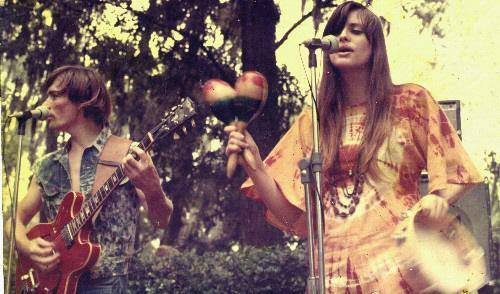The Allman Brothers Band - Eat a Peach
We start Season Five off with a monster album, Eat a Peach, by the Allman Brothers Band. Released in 1972, it is a double album and simultaneously their 3rd studio album and their 2nd Live album.
The Allman Brothers Band were perhaps the first "Southern Rock" band, but they were so much more than that. Steeped in the blues, the brothers Duane and Greg actually had careers as session musicians playing everything from soul to psychedelic folk. Their jams were inspired by jazz improvisations by John Coltrane and they had an uncanny ability to "jam" and harmonize simultaneously.
Eat A Peach, composed of both live and studio tracks, is ultimately is a celebration of the life of founding member and reluctant leader Duane Allman, who died during the making of this album in a tragic motorcycle accident. Somehow the band found the will to carry on. Eat a Peach showcases this influential band at the peak of their powers, as both songwriters and musicians.
No Recommendation for this episode.
THINGS WE DISCUSSED ON THIS EPISODE
Geraldine & Willis Allman with Duane in 1947.
Willis, a first lieutenant in the army, would be tragically killed two years latter by a hitchhiker he picked up while stationed in Norfolk Virginia.
In 1962, Duane and Gregg formed a surf guitar band called the Escorts. The Escorts actually recorded a few songs, including a “surfish” version of the Ray Charles’ hit “What’d I Say”
Pictured (L to R): Van Harrison, Duane Allman, Maynard Portwood, and Gregg Allman.
By 1965, the Escorts had morphed into the Allman Joys. The Allmon Joys went thought several line up changes over the next two years. Here’s the first lineup, circa 1965.
Pictured (L to R): Maynard Portwood, Duane Allman, Bob Keller and Gregg Allman.
A poster advertising a dance with music by the Allman Joys.
The Allman Joys were convinced by Bill McKuen, the manager of the Nitty Gritty Dirt Band, to head to LA. Once there, the band changed its name to Hour Glass and were signed to Liberty Records.
Duane is recovering from a cold on his birthday in 1967. Gregg drops off a copy of Taj Mahal's debut album and a bottle of Coricidin (cold medicine) as a birthday present.
Inspired by the album, Duane dumps the pills out of the glass bottle and uses the bottle to teach himself slide guitar by playing along with the record.
A Coricidin bottle would be his go to slide form that point on.
Liberty Records controlled everything the Allman Joys did, including what the band wore.
Fed up with their lack of control and success, Duane and Gregg leave LA and head to Jacksonville, Florida. While in Jacksonville, Duane starts hanging out and jamming with the a band called Second Coming whose line-up included future Allman Band members Berry Oakley on bass and lead guitarist Dicky Betts (pictured left).
In 1968, Daune heads to Fame Studios in Muscle Shoals, Alabama to see if he can pick up some session work.
When he shows up, studio head Rick Hall, tells him Fame had lots of guitarist so didn’t need him, but when Hall eventually gives him a shot he is was blown away by what he heard and signs him to a five year contract and Duane becomes Fame Studio’s main session guitarist.
While at Fame Studios, Duane worked with Wilson Picket (pictured). Duane convinces Hall and Picket to cut a version of the Beatles’ “Hey Jude.” Its a huge hit, going to number 1 and selling over a million singles.
Duane plays the guitar solo on that single, which leads to him getting noticed by both Jerry Wexler from Atlantic Records. As a result, his contract is bought by Atlantic and he begins to put what would become the Allman Brothers Band together.
The Allman Brothers Band performing “Whipping Post” in September of 1970 at the famed Fillmore East.
A year later, that venue would be the location of their iconic third LP (and first live album) At the Fillmore.












